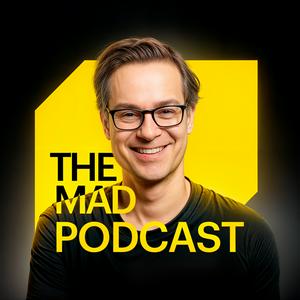State of AI 2025 with Nathan Benaich: Power Deals, Reasoning Breakthroughs, Real Revenue
Power is the new bottleneck, reasoning got real, and the business finally caught up. In this wide-ranging conversation, I sit down with Nathan Benaich, Founder and General Partner at Air Street Capital, to discuss the newly published 2025 State of AI report—what’s actually working, what’s hype, and where the next edge will come from. We start at the physical layer: energy procurement, PPAs, off-grid builds, and why water and grid constraints are turning power—not GPUs—into the decisive moat.From there, we move into capability: reasoning models acting as AI co-scientists in verifiable domains, and the “chain-of-action” shift in robotics that’s taking us from polished demos to dependable deployments. Along the way, we examine the market reality—who’s making real revenue, how margins actually behave once tokens and inference meet pricing, and what all of this means for builders and investors.We also zoom out to the ecosystem: NVIDIA’s position vs. custom silicon, China’s split stack, and the rise of sovereign AI (and the “sovereignty washing” that comes with it). The policy and security picture gets a hard look too—regulation’s vibe shift, data-rights realpolitik, and what agents and MCP mean for cyber risk and adoption.Nathan closes with where he’s placing bets (bio, defense, robotics, voice) and three predictions for the next 12 months. Nathan BenaichBlog - https://www.nathanbenaich.comX/Twitter - https://x.com/nathanbenaichSource: State of AI Report 2025 (9/10/2025)Air Street CapitalWebsite - https://www.airstreet.comX/Twitter - https://x.com/airstreetMatt Turck (Managing Director)Blog - https://www.mattturck.comLinkedIn - https://www.linkedin.com/in/turck/X/Twitter - https://twitter.com/mattturckFIRSTMARKWebsite - https://firstmark.comX/Twitter - https://twitter.com/FirstMarkCap(0:00) – Cold Open: “Gargantuan money, real reasoning”(0:40) – Intro: State of AI 2025 with Nathan Benaich(02:06) – Reasoning got real: from chain-of-thought to verified math wins(04:11) – AI co-scientist: hypotheses, wet-lab validation, fewer “dumb stochastic parrots” (04:44) – Chain-of-action robotics: plan → act you can audit(05:13) – Humanoids vs. warehouse reality: where robots actually stick first(06:32) – The business caught up: who’s making real revenue now(08:26) – Adoption & spend: Ramp stats, retention, and the shadow-AI gap(11:00) – Margins debate: tokens, pricing, and the thin-wrapper trap(14:02) – Bubble or boom? Wall Street vs. SF vibes (and circular deals)(19:54) – Power is the bottleneck: $50B/GW capex and the new moat(21:02) – PPAs, gas turbines, and off-grid builds: the procurement game(23:54) – Water, grids, and NIMBY: sustainability gets political(25:08) – NVIDIA’s moat: 90% of papers, Broadcom/AMD, and custom silicon(28:47) – China split-stack: Huawei, Cambricon, and export zigzags(30:30) – Sovereign AI or “sovereignty washing”? Open source as leverage(40:40) – Regulation & safety: from Bletchley to “AI Action”—the vibe shift(44:06) – Safety budgets vs. lab spend; models that game evals(44:46) – Data rights realpolitik: $1.5B signals the new training cost(47:04) – Cyber risk in the agent era: MCP, malware LMs, state actors(50:19) – Agents that convert: search → commerce and the demo flywheel(54:18) – VC lens: where Nathan is investing (bio, defense, robotics, voice)(68:29) – Predictions: power politics, AI neutrality, end-to-end discoveries(1:02:13) – Wrap: what to watch next & where to find the report (stateof.ai)


